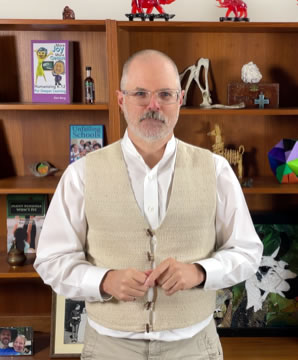Resources for Organizing Educational Change
Thank you for your interest in organizing education change.
There are two types of change that are the focus of this page: organizational change and societal change.
Organizational Change
Organizations have specific mechanisms that can be used to create movement towards our desired changes.
In spite of popular ideas to the contrary, organizations are constrained in their operations by the nature of human brains.
Some folks fantasize that they can write any policy they could imagine.
Their fantasy is that they merely have write it down and get the board (or whatever their ultimate organizational authority is called) to pass it and, viola, it magically becomes a reality that the organization will enact.
This is a vision of power that is not realistic.
The truth is that organizations act through the mechanism of human brains that interpret written (and non-written) policies and have internal goals and aspirations that will shape their actions, even in contradiction to anything they might have said out loud about what they intended to do.
This makes organizational change hard.
The challenge is to organize change in a manner that is better aligned with how human brains work, which was one of the main design constraints that informed the creation of the principles and practices of Back-to-Basics 2.0.
Back-to-Basics 2.0 is meant to be a foundation upon which organizational leadership can build legal foundations that are aligned with the contents and intentions of the Back-to-Basics principle and practices.
The strategy is top-down signaling of intentions as a means of empowering bottom-up change agents to assess their situations, propose changes, and advocate for the legally binding policy adjustments that will enable their changes to be successful.
Here are resources for learning about the Deeper Learning Resolution:
Back-to-Basics 2.0 - 4-page flyer- Excerpted from Chapter 1 of The Agentic Schools Manifesto
Chapter 5 of Schooling for Holistic Equity- Back-to-Basics 2.0 practices
Chapter 24 of Schooling for Holistic Equity- Deeper Learning Resolution
Societal Change
Societal change is far more complex than organizational change because there are no formal mechanisms.
Societal change has been accomplished many times before, so even though there are no formal mechanisms we can learn from the past.
Societal change also shares the limitation that its must work through the mechanism of human brains, therefore we can evaluate change strategies for their compatibility with what we know about human brains.
One of the most powerful facts about the human brain is that it is heavily influenced by stories.
One of the core pieces of the change model presented here is the Story of School, which is a way of understanding where we are, where we came from, and where we are going with reference to schools and education.
Here are several resources for learning about the DLA societal change strategy:
Chapter 4 of Schooling for Holistic Equity
Online Video of Don telling the Story of School
This article was printed from HolisticEquity.com




